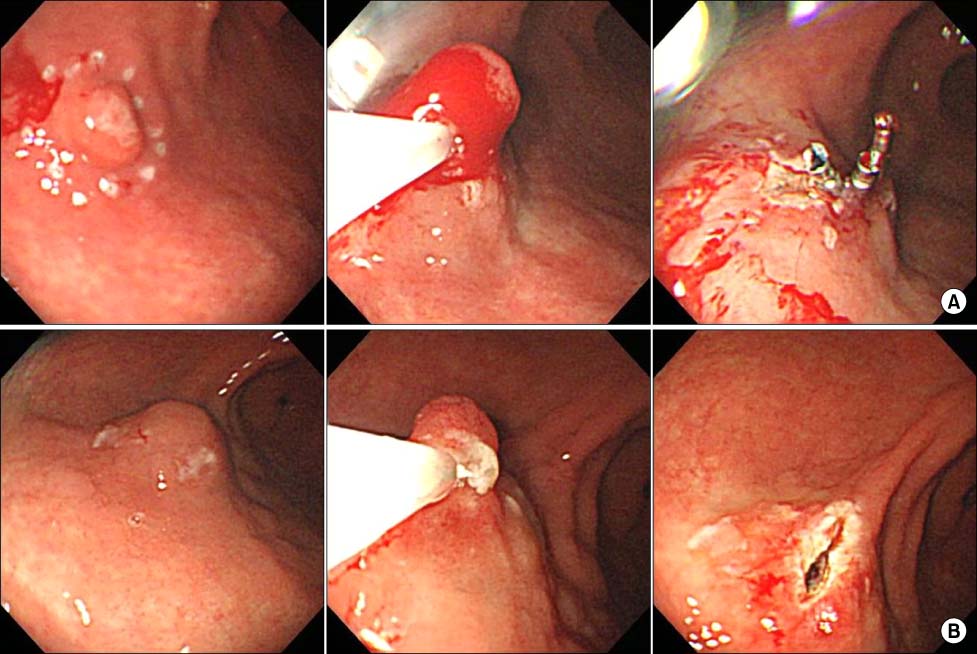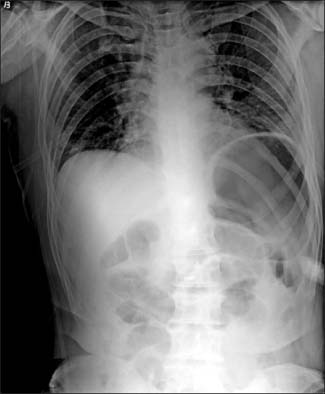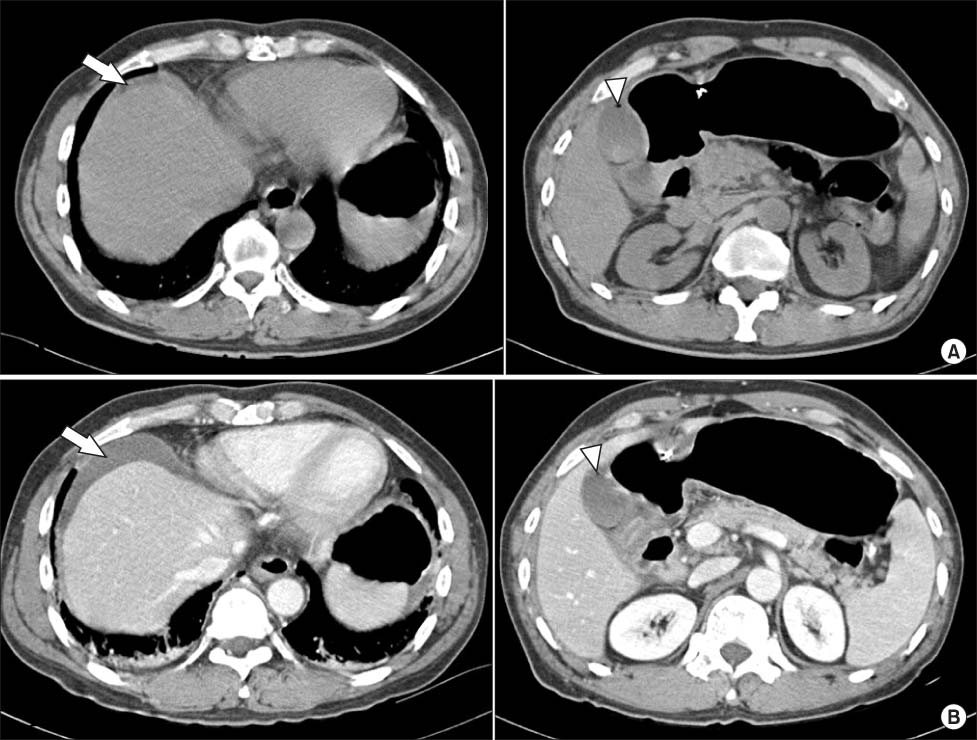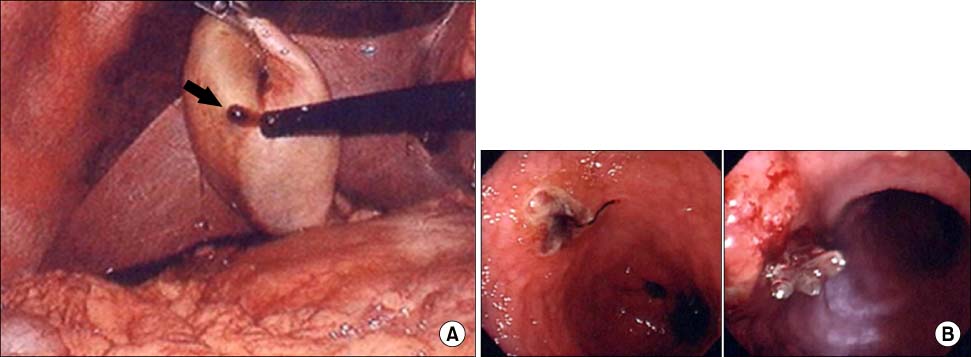J Korean Surg Soc.
2010 Sep;79(3):228-233.
Iatrogenic Gallbladder Perforation during Gastric Endoscopic Mucosal Resection
- Affiliations
-
- 1Department of Surgery, CHA Gumi Medical Center, CHA University, Gumi, Korea. kee39-surgeon@sendu.com
Abstract
- With the exception of accidental perforation during a laparoscopic Cholecystectomy, An Iatrogenic Gallbladder Perforation Is Quite Rare. Several Cases Have Been Reported As A Complication Of Interventional Or Endoscopic Procedures. Although A Case Of Gallbladder And Stomach Perforation During Gastric Endoscopic Mucosal Resection (Emr) Has Been Reported, We Encountered A Case Of Gallbladder Perforation During Gastric Emr Without Evidence Of A Perforation Of The Stomach, Which Has Not Been Reported In The Literature.
Keyword
Figure
Reference
-
1. Derici H, Kara C, Bozdag AD, Nazli O, Tansug T, Akca E. Diagnosis and treatment of gallbladder perforation. World J Gastroenterol. 2006. 12:7832–7836.2. Aljiffry M, Walsh M, Peltekian K, Molinari M. Type II gall bladder perforation with abdominal wall abscess in a cirrhotic patient: case report and review of the literature. J Surg Educ. 2008. 65:367–371.3. Kim DH, Min IC, Ryu DH, Lee OJ, Bae IH, Choi JW. Gallbladder perforation without gallstones or cholecystitis. J Korean Surg Soc. 2008. 75:407–410.4. Duca S, Bãlã O, Al-Hajjar N, Lancu C, Puia IC, Munteanu D, et al. Laparoscopic cholecystectomy: incidents and complications. A retrospective analysis of 9542 consecutive laparoscopic operations. HPB (Oxford). 2003. 5:152–158.5. Soper NJ, Dunnegan DL. Does intraoperative gallbladder perforation influence the early outcome of laparoscopic cholecystectomy? Surg Laparosc Endosc. 1991. 1:156–161.6. Lublin M, Danforth DN. Iatrogenic gallbladder perforation: conservative management by percutaneous drainage and cholecystostomy. Am Surg. 2001. 67:760–763.7. Bhandari S, Farr MJ. Iatrogenic gall bladder perforation. Postgrad Med J. 1995. 71:126.8. Farkas I, Marik J. Bile peritonitis after inadvertent bladder puncture as a rare complication of percutaneous transhepatic cholangiography with the Chiba needle. Leber Magen Darm. 1983. 13:37–39.9. Hamaguchi M, Katoh T, Shimazaki S, Tsuboi H, Matsushita T, Kojima T, et al. Gallbladder perforation associated with gastric EMR for gastric adenoma. Gastrointest Endosc. 2004. 60:488–490.10. Jeong G, Lee JH, Yu MK, Moon W, Rhee PL, Paik SW, et al. Non-surgical management of microperforation induced by EMR of the stomach. Dig Liver Dis. 2006. 38:605–608.
- Full Text Links
- Actions
-
Cited
- CITED
-
- Close
- Share
- Similar articles
-
- Pneumothorax Following Gastric Endoscopic Mucosal Resection
- A Case of Successful Non-surgical Management of Iatrogenic Gastric Perforation with Fluid Collection after Endoscopic Mucosal Resection
- Endoscopic Clip Ligation on Mucosal Defect after Endoscopic Mucosal Resection
- Two Cases of Successful Clipping Closure of Iatrogenic Duodenal Perforation Occurred during Endoscopic Procedure
- A Case of Gastric Perforation due to Endoscopic Mucosal Resection Managed by Detachable Snare and Hemoclips






